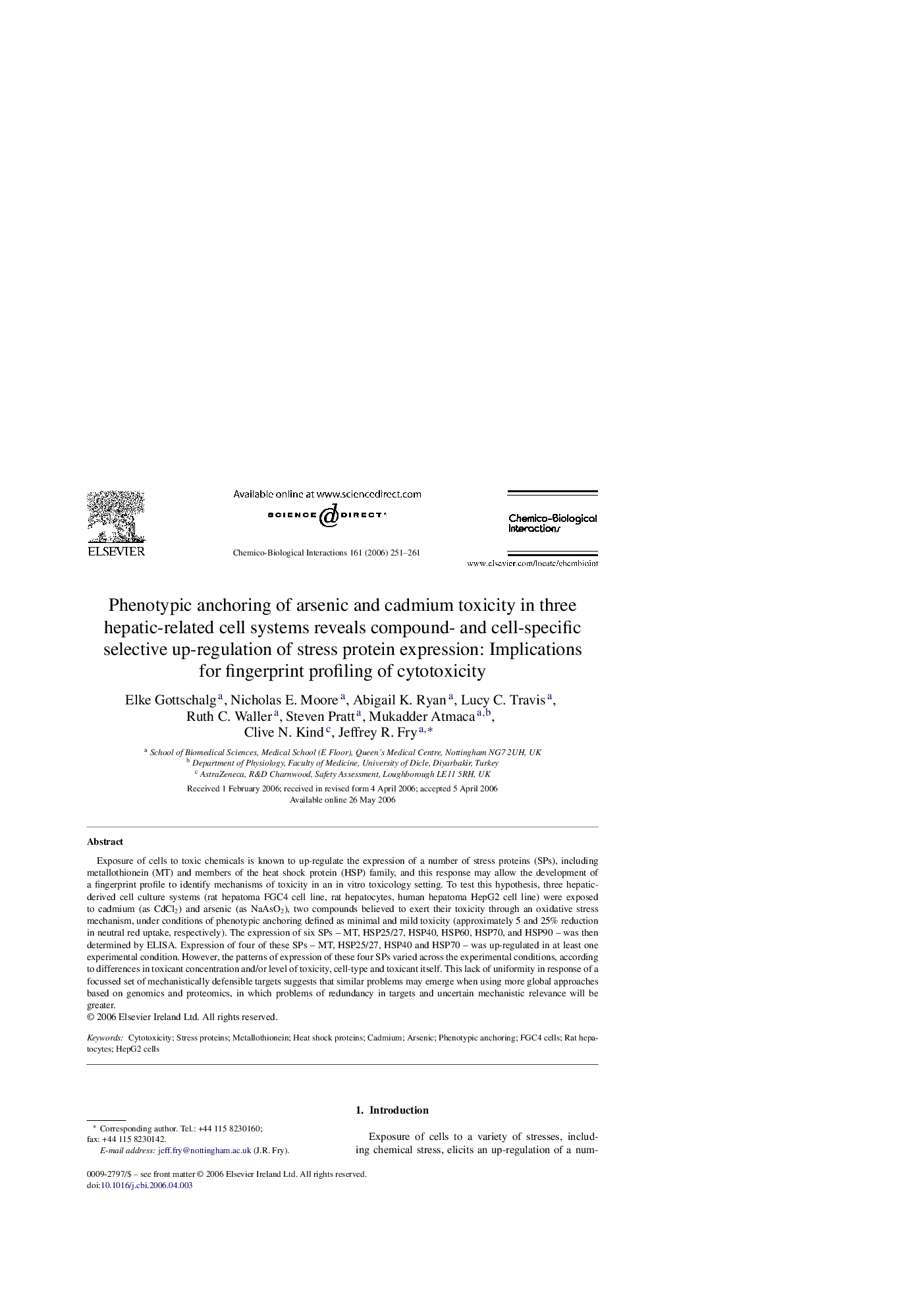| کد مقاله | کد نشریه | سال انتشار | مقاله انگلیسی | نسخه تمام متن |
|---|---|---|---|---|
| 2582390 | 1130235 | 2006 | 11 صفحه PDF | دانلود رایگان |

Exposure of cells to toxic chemicals is known to up-regulate the expression of a number of stress proteins (SPs), including metallothionein (MT) and members of the heat shock protein (HSP) family, and this response may allow the development of a fingerprint profile to identify mechanisms of toxicity in an in vitro toxicology setting. To test this hypothesis, three hepatic-derived cell culture systems (rat hepatoma FGC4 cell line, rat hepatocytes, human hepatoma HepG2 cell line) were exposed to cadmium (as CdCl2) and arsenic (as NaAsO2), two compounds believed to exert their toxicity through an oxidative stress mechanism, under conditions of phenotypic anchoring defined as minimal and mild toxicity (approximately 5 and 25% reduction in neutral red uptake, respectively). The expression of six SPs – MT, HSP25/27, HSP40, HSP60, HSP70, and HSP90 – was then determined by ELISA. Expression of four of these SPs – MT, HSP25/27, HSP40 and HSP70 – was up-regulated in at least one experimental condition. However, the patterns of expression of these four SPs varied across the experimental conditions, according to differences in toxicant concentration and/or level of toxicity, cell-type and toxicant itself. This lack of uniformity in response of a focussed set of mechanistically defensible targets suggests that similar problems may emerge when using more global approaches based on genomics and proteomics, in which problems of redundancy in targets and uncertain mechanistic relevance will be greater.
Journal: Chemico-Biological Interactions - Volume 161, Issue 3, 1 July 2006, Pages 251–261